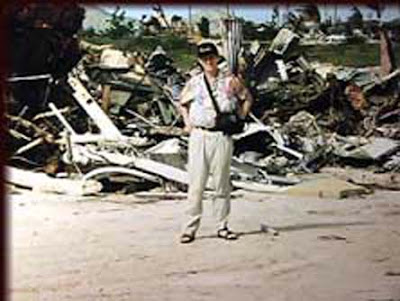This period was crucial for the foundation of the Institute because of our director Poirier's venture into the world of conventional architecture, designing and building everything from corporate headquarters to gasoline stations. After having spent nearly 20 years in the industrial sector, he felt the need to reconnect with conventional construction and new building techniques, their documentation and execution. He joined the Royal Institute of Architects of Canada, taught briefly at the University of Montreal and renewed his Canadian architectural license. Research was never very far as Poirier managed to innovate in several fields during that period. Writing a complete 3D software package from scratch still used by its client , a stairs manufacturer, the director of the Institute now has brought us an incredible logistics and design set of tools that can guarantee the smooth execution of our development and growth program. N.B.
ARCHIMEDE INSTITUTE
1985-1995
In 1985, Poirier sold the Canadian Patent to his partner and immigrated to the US where he set up plants, first in New Mexico, then in Florida and Louisiana . He pushed research in several directions, adpating to desertic, then tropical and then cyclonic environments.
Soon it became know by developers of resorts that the Archimede houses could take it on the chin, having successfully gone through several big one unscathed. In 1995, Poirier was himself in one ot these condos when Luis hit the island of Sint Maarten with unusual ferocity. Again no damage to the 40 condos in Guana Bay Beach where winds were clocked at 285 mph (+400 km/he). In his own words, Poirier got 'a postgraduate degree in hurricane resistance' just by spending the next two weeks scouting the island to analyse breakage of materials in a force 5 hurricane. This one had sat on the island for 12 hours, destroying to an amazing degree. After 15 days, planes could land and our director went into a more conventional architectural practice and to the University of Montreal as an invited teacher of architecture and part-time researcher. But the 'manufacturing bug' bit again in 1997!
In 1995, Poirier was himself in one ot these condos when Luis hit the island of Sint Maarten with unusual ferocity. Again no damage to the 40 condos in Guana Bay Beach where winds were clocked at 285 mph (+400 km/he). In his own words, Poirier got 'a postgraduate degree in hurricane resistance' just by spending the next two weeks scouting the island to analyse breakage of materials in a force 5 hurricane. This one had sat on the island for 12 hours, destroying to an amazing degree. After 15 days, planes could land and our director went into a more conventional architectural practice and to the University of Montreal as an invited teacher of architecture and part-time researcher. But the 'manufacturing bug' bit again in 1997!
Soon it became know by developers of resorts that the Archimede houses could take it on the chin, having successfully gone through several big one unscathed.
 In 1995, Poirier was himself in one ot these condos when Luis hit the island of Sint Maarten with unusual ferocity. Again no damage to the 40 condos in Guana Bay Beach where winds were clocked at 285 mph (+400 km/he). In his own words, Poirier got 'a postgraduate degree in hurricane resistance' just by spending the next two weeks scouting the island to analyse breakage of materials in a force 5 hurricane. This one had sat on the island for 12 hours, destroying to an amazing degree. After 15 days, planes could land and our director went into a more conventional architectural practice and to the University of Montreal as an invited teacher of architecture and part-time researcher. But the 'manufacturing bug' bit again in 1997!
In 1995, Poirier was himself in one ot these condos when Luis hit the island of Sint Maarten with unusual ferocity. Again no damage to the 40 condos in Guana Bay Beach where winds were clocked at 285 mph (+400 km/he). In his own words, Poirier got 'a postgraduate degree in hurricane resistance' just by spending the next two weeks scouting the island to analyse breakage of materials in a force 5 hurricane. This one had sat on the island for 12 hours, destroying to an amazing degree. After 15 days, planes could land and our director went into a more conventional architectural practice and to the University of Montreal as an invited teacher of architecture and part-time researcher. But the 'manufacturing bug' bit again in 1997!
Subscribe to:
Comments (Atom)